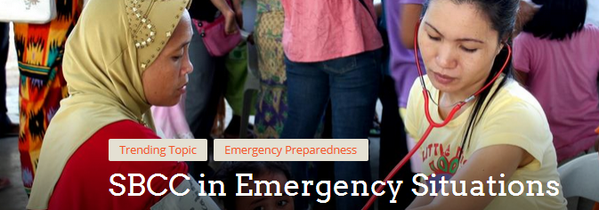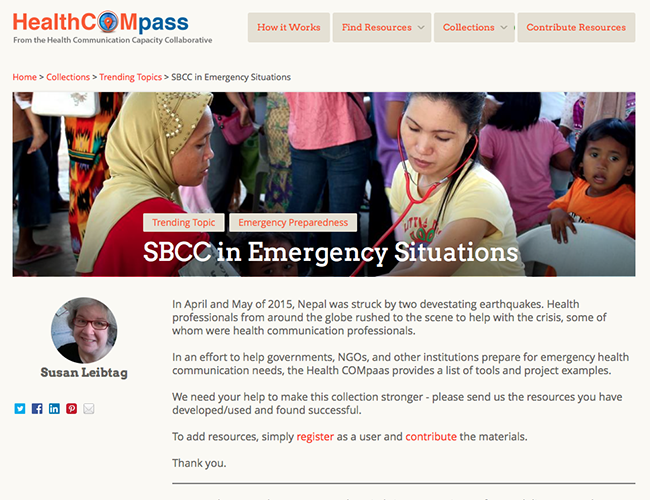SBCC in Emergency Situations

In an effort to help governments, NGOs, and other institutions prepare for emergency health communication needs, the Health COMpass provides a list of tools and project examples.
In times of crisis, communication is key.
As we’ve seen from the Ebola virus medical emergency situation in Africa, and more recently in the Nepal earthquake aftermath, getting the word out about where health services are, how to reach them, what to look for (in cases of disease), how to comfort, and even how to self-treat if needed, can mean the difference between life and death.
Preparing for emergencies can be time-consuming and even costly, but it is not a task that any institution can ignore. Setting up a communication infrastructure, getting all of the major players on the same page, and even running emergency scenarios to rehearse for tragedies that we hope never come, can save thousands of lives.
While emergency preparedness and risk communication are not new fields of study, having tools at hand to help institutions with carrying out those tasks has never been easier than it is in these days of electronic resource sharing. The Health COMpass has gathered several of the best “how to do it” tools and a few examples of “how it’s been done” to help organizations begin to think about emergency communication preparedness and strategies.
While we hope that no country will need them, we know that being ready to respond at a moment’s notice is more than half the battle. And if preparation can help save even one life, it is well worth every minute spent ahead of time.
This collection is still growing, and the Health COMpass staff is anxious to grow in this area, so if you have a tool or project example that you’d like to share, please join the Health COMpass and contribute your resources.








Leave a Reply
Want to join the discussion?Feel free to contribute!